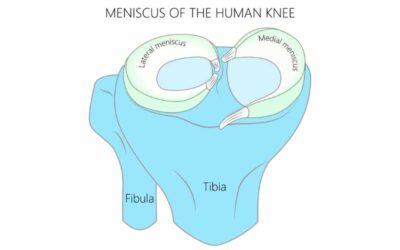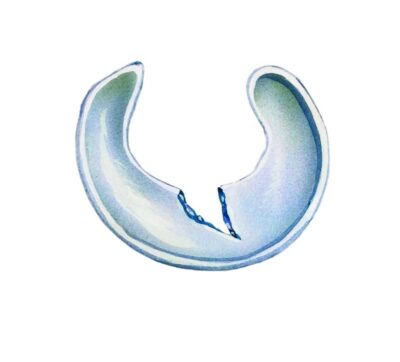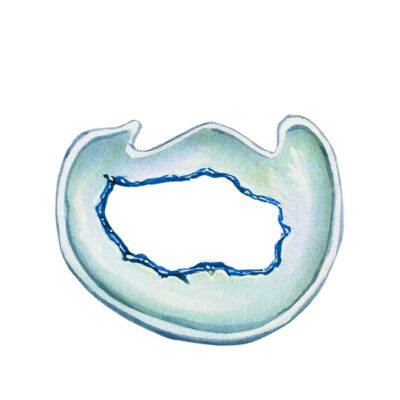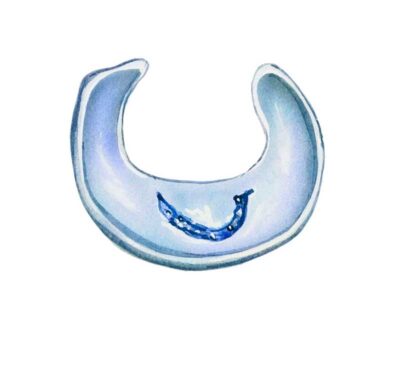Meniscus Injury Specialist

Are you experiencing pain and stiffness in your knee? If so, you may have torn your meniscus. A meniscus tear is among the most common knee injuries. A torn meniscus can occur in several different ways. Meniscus tear specialist, Doctor Riley J. Williams provides diagnosis as well as surgical and nonsurgical treatment options for patients in Manhattan, Brooklyn, New York City and surrounding areas who have sustained an ACL injury. Contact Dr. Williams’ team today!
What is the meniscus of the knee?
The knee has two c-shaped menisci that act as shock absorbers between the femur (thigh bone) and the tibia (shin bone). These two pieces of cartilage are tough and rubbery and help keep the joint stable while acting as a cushion between the bones. The meniscus of the knee plays a vital role in distributing weight, or “load” across the knee, making pain-free running, walking and standing possible.
What is a meniscus injury?
Meniscus injuries occur when one or both of the cushioning cartilages in the knee becomes worn, frayed or torn. Often referred to as a torn cartilage, meniscus injuries are among the most common knee injuries that occur in individuals. Those who participate in contact or pivoting sports are most at risk for sustaining a meniscus injury, however they can occur at any age and among athletes or non-athletes alike. For individuals who reside in or near Manhattan, Brooklyn, New York City, NY and surrounding areas, Dr. Riley J. Williams, orthopedic knee specialist, can diagnose and treat a meniscus injury and has a proven track-record for getting patients back in the game or back to normal life following a meniscus injury.
What is the medial meniscus?
The medial meniscus is located closer to the center of the body and is often referred to as the internal semilunar fibrocartilage. The medial meniscus has a more crescent shape than the lateral meniscus which is more circular. The job of the medial meniscus is to separate the femur from the tibia and to serve as a shock absorber when contact force is experienced between the two bones. The medial meniscus also reduces friction and allows smooth movement in the knee as it evenly distributes load during movement.
What causes a medial meniscus injury?
The medial meniscus is injured more often than the lateral meniscus due to its location and attachment site within the knee. The medial meniscus is attached to the medial collateral ligament (MCL) and the joint capsule. It is “trapped” in an area of vulnerability, especially during forced movements such as a rapid stop, twisting motion when the foot is planted, or from a hard fall or tackle in sports. The medial meniscus also handles a lot of load and load distribution which can wear down the fibrocartilage and cause it to tear or fray. The most common causes of a medial meniscus injury involve sports such as:
- Football
- Soccer
- Basketball
- Tennis
- Lacrosse
- Martial Arts
Does it matter where the meniscus tears?
The meniscus has two zones, the red zone and the white zone. The red zone is located on the outer third of the meniscus and has a rich blood supply which gives it the ability to heal some tears. The white zone, on the inner two-thirds of the meniscus, does not have a significant blood supply and cannot heal by itself. The location of a meniscus injury is important in determining the plan of treatment. Dr. Williams will diagnose the type of tear and form a treatment plan for his patients in the New York City area that will be the best, individualized option for their specific type of meniscus injury.
What are the types of medial meniscus injuries or tears?
The types of medial meniscus tears are categorized according to where the tear occurred, as well as the size and shape of the tear. The type of tear in the knee cartilage is important because it will help determine the best treatment for the medial meniscus injury. The types of medial meniscus tears are below.
Complex Tear
Complex tears of the medial meniscus involve a combination of tear patterns. The tears often involve both radial tears and horizontal tears. Depending on the complex nature of the tear, Dr. Williams will remove or repair part of the torn meniscus.
Bucket-Handle Tear
Named for their appearance, bucket-handle tears of the medial meniscus can occur in either the red zone or the white zone. This vertical tear often resembles a “bucket handle” and can flip or fold into the knee joint, causing mechanical problems. Bucket-handle tears often require more immediate surgical attention to restore the mobility of the knee joint.
Horizontal Tear
Horizontal tears of the medial meniscus are also called cleavage tears. This type of meniscal tear is oriented horizontally, parallel to the tibial plateau. Horizontal tears often respond well to meniscus repair when located within the vascular portion of the meniscus (near the outer edge). A centralized horizontal tear will not heal, even if repaired.
Meniscocapsular Injury
Meniscocapsular injuries are uncommon and refer to the detachment of the meniscus from capsular attachments. It is a sub-type of meniscus injury and describes a type of tear where the posterior meniscus horn pulls away from joint capsule. Meniscocapsular injuries are difficult to visualize on an MRI image and are often marked by edema and irregularity of the meniscocapsular junction of the posterior horn.
What are the symptoms of medial meniscus injuries or tears?
Most medial meniscus tears have similar symptoms and may include:
- Pain, often severe at the time of injury
- Medial pain (pain on the inside of the knee)
- Swelling
- Tenderness
- Loss of range of motion – inability to completely straighten or flex the knee
- Catching or locking sensation
How are medial meniscus injuries diagnosed?
Dr. Williams will discuss your symptoms and medical history and will perform a physical examination of the affected knee. He will check for tenderness along the inside of the knee and will perform a few tests to determine range of motion. To confirm his diagnosis, imaging test may be required which can include x-ray, or an MRI scan. MRI stands for Magnetic Resonance Imaging which provides complete views of both the bones and soft tissues in the knee. Most meniscus injuries are seen on an MRI and proper treatment can be planned.
What is the treatment for an injured medial meniscus?
Treatment for an injury to the medial meniscus will vary, depending on the type, area and severity of the tear. Dr. Williams also takes into consideration the age, health and goals of the patient.
Non-surgical treatment:
Conservative treatment may occur for tears in the red zone that are small. Non-surgical treatment for an injured or torn medial meniscus include:
- RICE – Rest, Ice, Compression, Elevation
- NSAIDs – Non-Steroidal Anti-Inflammatory Drugs
- Physical Therapy
Surgical treatment:
Surgical treatment will be based upon the type, size and location of the medial meniscus tear. Dr. Williams has extensive successful experience in the surgical treatment of meniscus tears and may perform one or more of the following surgical treatments:
- Partial Meniscectomy
- Meniscus repair
- Meniscus transplantation
Many surgical meniscus procedures can be done arthroscopically using small incisions and a small camera called an arthroscope. The camera relays images onto a screen and Dr. Williams uses small, specialized instruments to operate inside the knee. There are many benefits to arthroscopic knee surgery including a quicker recovery time, less chance of infection and less post-operative pain.
Locations
610 W 58th Street
New York, NY 10019
148 39th Street, 7th Floor
Brooklyn, NY 11232






